There’s a part of the brain that is compelled to figure out things we don’t instantly understand. One of the ways photography can trigger that compulsion is with long exposure images. We can mess with time to create a world we can’t see on our own. We can make flowing water look silky and smooth, clouds that streak across the sky and show the path of lights.
Light painting takes advantage of the long exposure to show a single point of light in many places at the same time. Frequently these paths are round. Light orbs and spinning steel wool photos are very popular and easy to create. Can we create other shapes as well?
Yes!… um, sort of. Of course you can create streaks or ribbons by running a light down a path. I wanted to create stationary shapes other than spheres. I bought a string of battery powered micro LED lights online and some square dowels, flat corner braces, small screw-in hooks and black zip ties at the local hardware store. I went with green lights because I wanted to photograph the lights in a forest setting and thought the green would make it seem like it belonged there.
The first proof of concept shape I tried was a double cone. By the way, I looked up “geometry term for double cone” hoping to geek out with an obscure technical name. I was disappointed to discover it’s just called a “bicone”.
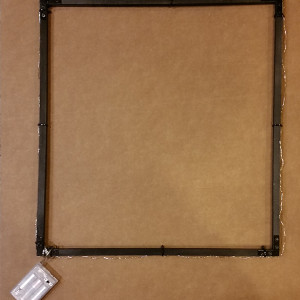
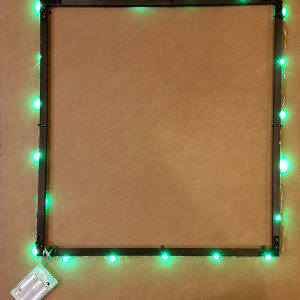
Using the dowels and corner braces, I made a simple square frame and painted it black. The string of LED lights is 6′ long so each side of the square was cut to 18″. For every other country in the world except the U.S. – the string is 2 meters long and each side was about 50cm. The LED lights were attached to the frame with zip ties starting at one corner and ending at the same corner. Into the opposite corner I screwed in a little hook. I let the battery pack dangle to provide stability and make it easier to clone out during post processing.
I hung the frame with black thread in my basement, turned off the lights and gave it a spin. It works! After experimenting with aperture and shutter speed, I settled on f/8 for 5 seconds. I thought about hooking it up to a battery powered motor, but a hand spin is plenty fast enough and it introduces a wobble which gives the bicone a little life. Adding another string of lights to fill in the gaps would make a more solid looking shape.
Yes, this is still technically round – the path of each light is a circle – but it’s not an orb.
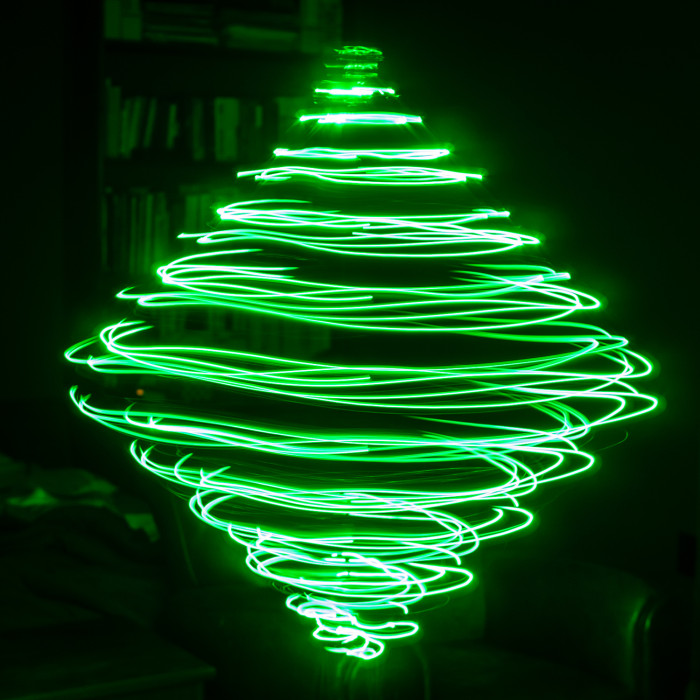
ISO:100 f/8 – 12mm – 5 seconds
Having a proof of concept, I waited until dusk and took the frame to a local park. After walking down a path away from the parking lot I found a branch I could reach and threw the thread over then wrapped it around the trunk. Next time I want to find a steadier branch so it and the leaves won’t blur. I setup the camera on the tripod, spun the frame and took a 10 second long exposure. My antics may have confused at least one late evening jogger.
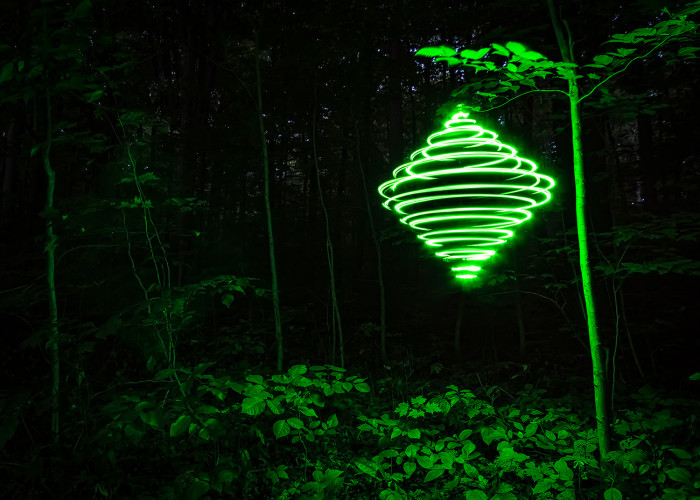
ISO:100 – f/8 – 15mm – 10 seconds
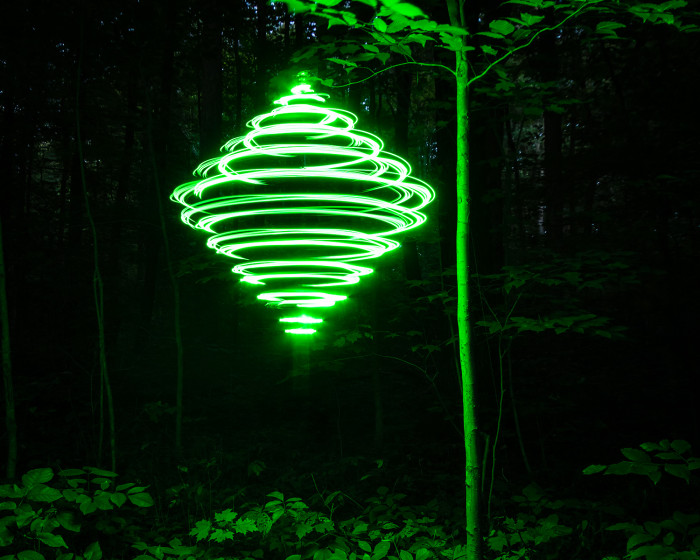
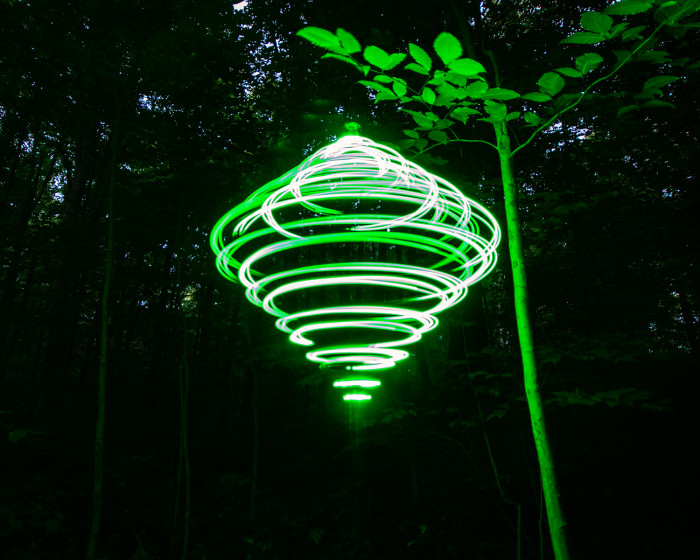
Some other possibilities include hanging it with one of the sides perpendicular to the ground, which should make a cylinder. If I add another hook and suspend it between two trees then I can make the light paths vertical instead of horizontal. If I remove one side then I’d get a single cone or, as I prefer to call it, a tornado of light. If I add another side then I’ll get whatever a 3D rotated pentagon is called.
Hopefully that shape has a cooler name.
UPDATE: 8-22-2015: Went back to Blendon Woods and took the light frame to my favorite spot, Ripple Rock Creek, to get another shot that included some water and reflections. I now know that I can drop the whole thing, battery pack and all, in to the water in the dark and it will still work. Ooops.
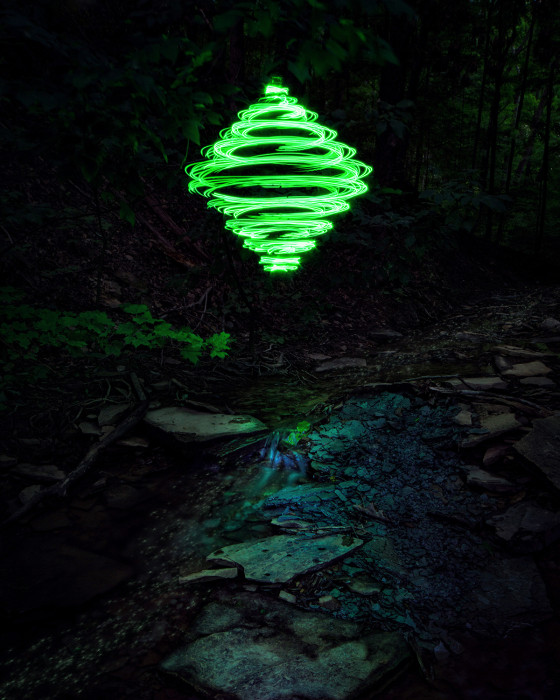
ISO:100 – f/16 – 20mm – 10 seconds